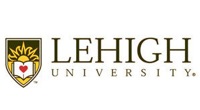Below is a summary of the abstract you submitted. Presenting author(s) is shown in bold.
If any changes need to be made, you can modify the abstract or change the authors.
You can also download a .docx version of this abstract.
If there are any problems, please email Dan at dar78@pitt.edu and he'll take care of them!
This abstract was last modified on May 27, 2024 at 9:05 p.m..

Lehigh celebrates 15 years in the SEA this year, having expanded from two undergraduate course offerings in phage discovery and genome annotation in 2009 to four courses that now include investigations of phage gene functions in SEA-GENES and several phage biology questions in an Advanced Phage Research Laboratory. Research findings from two projects will be discussed. One of our long-standing research interests among undergraduate and graduate students interested in phage biology is the investigation of host defense mechanisms attributed to cluster N prophages. Interestingly, of the 43 sequenced cluster N phages found on the Actinobacteriophage Database at phagesdb.org, eleven (11) have been isolated by Lehigh students, starting with Butters in 2011. Our research has focused on understanding molecular mechanisms that govern defense. Using PurpleHaze (subcluster A3) and Island3 (subcluster I1) as model heterotypic phages to study defense mechanisms in a Butters lysogen, we have learned through forward and reverse genetics approaches that at least two separate prophage-mediated antiphage systems involving Butters genes 30/31 and reverse gene 57 (57r) operate in a Butters lysogen. Additionally, advanced phage research students are investigating the functions of cluster N phage Kevin1 genes 30 (a functionally annotated AAA-ATPase) and 31 (an orpham), both predicted to be expressed by the prophage. Gene 30 is cytotoxic when overexpressed from atc-inducible plasmid pExTra in Mycobacterium smegmatis, whereas a gene 30 mutant lacking the AAA-ATPase domain is not cytotoxic. This finding suggests that gene 30 cytotoxicity is mediated through the AAA-ATPase domain. Notably, both Kevin1 wild-type and mutant gene 30 phages produce lysogens. Experiments also show that overexpression of gene 31 in M. smegmatis is not cytotoxic. Co-expression of genes 30 and 31 within the host abrogates gene 30 cytotoxicity, suggesting that genes 30 and 31 encode a toxin-antitoxin system expressed in the lysogenic state. AlphaFold2 structure modeling predicts an interaction between Kevin1 gp30 and gp31. Experiments are in progress to delete gene 31 in both wild-type and mutant gene 30 Kevin1 phage by BRED strategies and to test resultant mutant phages for efficiency of lysogen production. We predict that modulation of gene 31 activity will impact Kevin1 lysogen establishment and maintenance. A summary of research findings from work on Butters antiphage systems and Kevin1 gene 30/31 cytotoxicity will be presented, with highlights from contributions by undergraduates.

